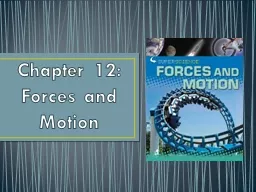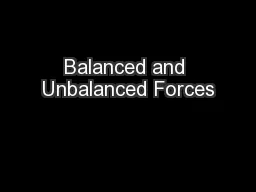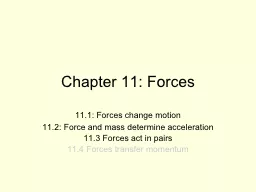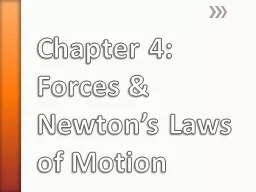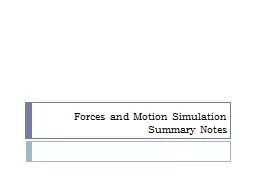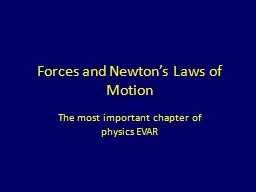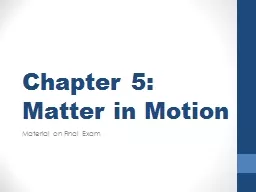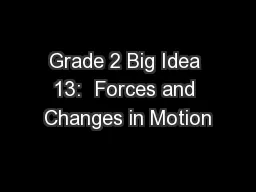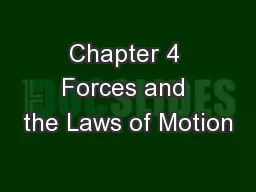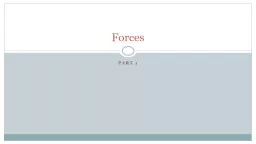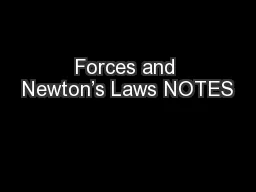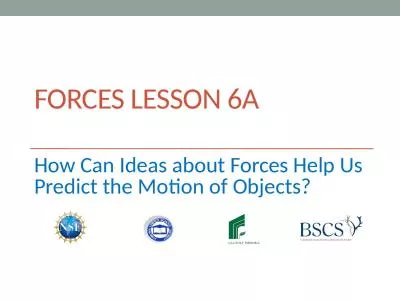PPT-Chapter 12: Forces and Motion
Author : mitsue-stanley | Published Date : 2018-09-22
Standards SPS8 Students will determine relationships among force mass and motion b Apply Newtons three laws to everyday situations by explaining the following Inertia
Presentation Embed Code
Download Presentation
Download Presentation The PPT/PDF document "Chapter 12: Forces and Motion" is the property of its rightful owner. Permission is granted to download and print the materials on this website for personal, non-commercial use only, and to display it on your personal computer provided you do not modify the materials and that you retain all copyright notices contained in the materials. By downloading content from our website, you accept the terms of this agreement.
Chapter 12: Forces and Motion: Transcript
Download Rules Of Document
"Chapter 12: Forces and Motion"The content belongs to its owner. You may download and print it for personal use, without modification, and keep all copyright notices. By downloading, you agree to these terms.
Related Documents

